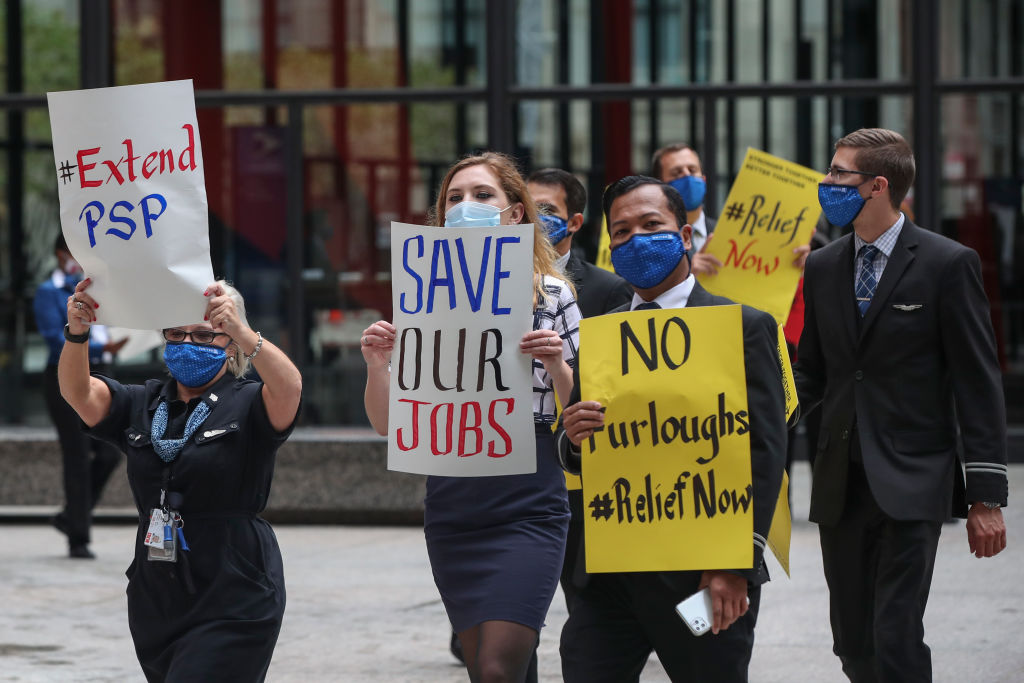
U.S. employers brought back 661,000 workers in September, according to U.S. Bureau of Labor Statistics figures released Friday. The unemployment rate clocked in at 7.9%, down from 8.4% in August. About half of the jobs lost to the pandemic have returned.
The problem, economists say, is that the pace of recovery is slowing. Going forward, we may see only incremental employment gains at best, at least until the virus is completely under control. “It will be hard to get a full recovery before we get a vaccine or big advancement in therapeutics,” says Sarah House, senior economist at Wells Fargo. “The second half of the recovery will be a lot longer.” Massive layoffs planned by major companies in the coming days and weeks are also likely to take a toll.
The big job gains over the summer were the result of furloughed workers coming back to their jobs when local economies reopened. For example, the Cheesecake Factory announced at the end of August that it had brought back just about all of the 41,000 staffers who were unable to work when lockdowns began in March. The company’s permanent layoffs totaled just 175.
But employment gains from reopening were easy. Now, companies that are suffering deeper fundamental impacts from the pandemic—in sectors like travel, hospitality and energy—are now adjusting to a new normal. In many cases, that means permanent cuts. Several major corporations announced huge layoffs in recent days: 28,000 at Disney. 3,600 at Ralph Lauren. 3,800 at Allstate insurance. 2,000 at Marathon Petroleum. 31,000 at American Airlines and United Airlines, combined.
“These numbers are worrisome,” says Betsey Stevenson, professor of public policy and economics at University of Michigan. “When they let people go, it’s not temporary layoffs. These are companies struggling to keep people on and thought could get to the other end [of the pandemic]. But the end is not in one or two months. And maybe not in six months.”
The labor market is losing momentum as 10.7 million Americans are still out of work compared with February. About 1.5 million people filed initial unemployment claims last week, according to BLS data released yesterday, either through their state or through the federal Pandemic Unemployment Assistance program, which was designed for gig workers like Uber drivers. Those who have lost their jobs may find it even tougher than usual to find a new one, given that they’re competing with more than 10 million other unemployed Americans.
Some businesses had been using federal stimulus programs like the CARES Act, passed in March, as a backstop. But provisions of the law have expired or will expire by year’s end, including layoff protections for aviation workers that ran through the end of September. As a result, airlines that accepted Washington’s financial help have been free to lay off workers since Thursday. Air carriers have urged Congress to pass another round of aid; both American Airlines and United Airlines have pledged to reverse course on their furloughs if such help materializes. House Speaker Nancy Pelosi on Friday asked airlines to pause layoffs, promising industry-specific help is on the way.
But even if the airlines get more help, it’s unlikely a broader relief bill will pass Congress. The Democratic-controlled House of Representatives on Thursday passed a $2.2 trillion coronavirus relief bill, which includes some aid for small businesses. But the legislation, which doesn’t have bipartisan congressional support and is opposed by the White House and Treasury Secretary Steven Mnuchin, is a nonstarter in the Republican-led Senate.
“If they don’t get additional support, which is our expectation with our forecast, companies need to put that in their calculus in terms of their revenue forecasts and staffing needs,” notes House.
The continued unemployment crisis, compounded by massive layoffs, could have serious economic consequences even for those Americans fortunate enough to remain employed. If people don’t get back to work, it could dampen consumer spending, which accounts for two-thirds of U.S. GDP. Less spending could in turn trigger even more layoffs, potentially causing a downward spiral. “There’s still some firepower among consumers, but so long as this goes on, then the gains we’ve seen thus far are in jeopardy,” says House.
“We’re at an inflection point,” Stevenson adds. “Half the people who were temporarily laid off have come back. It was always clear that we weren’t going to get 100%. We may only get to 70.”
More Must-Reads from TIME
- Cybersecurity Experts Are Sounding the Alarm on DOGE
- Meet the 2025 Women of the Year
- The Harsh Truth About Disability Inclusion
- Why Do More Young Adults Have Cancer?
- Colman Domingo Leads With Radical Love
- How to Get Better at Doing Things Alone
- Michelle Zauner Stares Down the Darkness
Contact us at letters@time.com